Beyond the Glow: Unveiling Amsterdam’s Red Light Secrets
Imagine stepping into a world where the night is forever young, and the streets glow with an alluring mix of mystery and openness. This is the Red Light District of Amsterdam, a place where the provocative and the picturesque blend seamlessly, drawing curious eyes from all corners of the globe.
Here, centuries-old buildings lean over narrow alleys illuminated by the district’s infamous neon windows, each telling a story as intriguing as the next. This guide isn’t just another tourist manual; it’s your backstage pass to one of the most talked-about spots on the planet.
Whether you’re a night owl, a culture enthusiast, or just in for some eye-opening experiences, buckle up. We’re about to peel back the layers of Amsterdam’s Red Light District, revealing its true colors beyond the bright lights.
The Neon Heart of Amsterdam: A Primer
A Walk Through History
The Red Light District, known locally as De Wallen, is not just a modern-day marvel; its roots dig deep into the history of Amsterdam. This area has been the beating heart of the city’s night-time economy since the 14th century, originally starting as a trade and harbor district. As sailors and merchants swarmed its ports, the demand for entertainment and leisure grew, gradually shaping it into the zone of liberal attitudes and practices we know today. Understanding this evolution is key to appreciating the district for what it is: a complex, historically layered part of Amsterdam’s cultural fabric.
Legal Framework and Social Context
What sets Amsterdam’s Red Light District apart is not just the allure of its neon signs but the legal and regulated environment in which it operates. The Netherlands is known for its pragmatic approach to what many other countries keep underground. Here, sex work is recognized as a profession, with rights and protections for those within the industry. This legal backbone supports a framework where safety, health, and professional respect are paramount, debunking myths and misunderstandings about the district’s operations. Reflecting on this helps us view the Red Light District not as a zone of moral debate but as an area where the city’s open-mindedness and regulatory rigor shine.
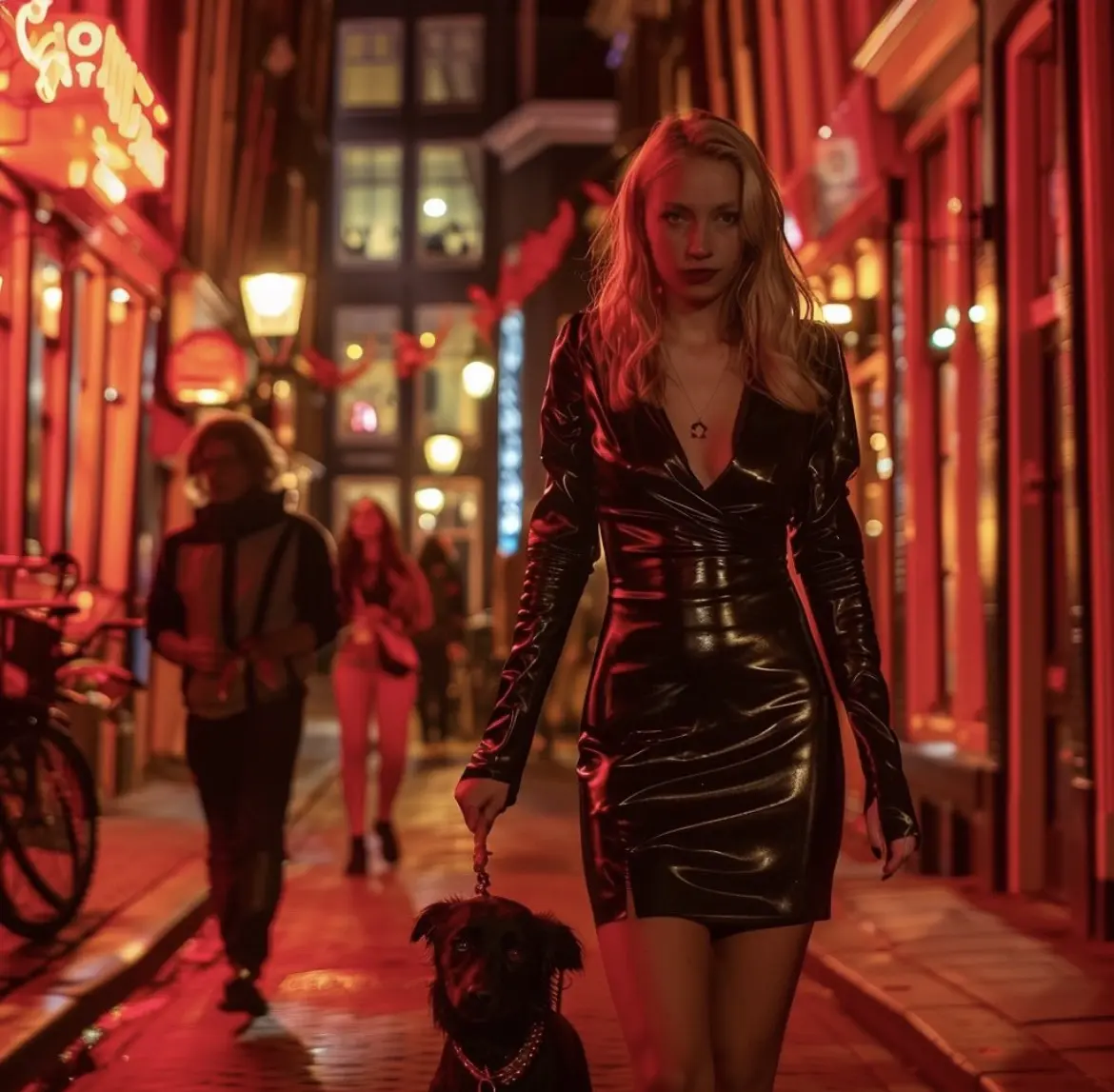
When to Visit and What to Expect
Navigating the ebb and flow of Amsterdam’s Red Light District is an art in itself. The experience changes with the time of day, the season, and even the day of the week. Here’s how to time your adventure for maximum enjoyment and what sensory delights and cultural encounters await you in this neon-wrapped neighborhood.
Best Time to Visit The Red Light District
When the sun sets, the district begins to truly come alive. The neon starts to glow around dusk and reaches its full vibrancy as the night progresses. For the full experience, aim to explore after dark but before midnight, especially if you’re keen on experiencing the lively bar and club scene in full swing. Weekends bring bigger crowds, transforming the narrow streets into a bustling parade of nightlife enthusiasts. However, for a more laid-back exploration, consider a weekday evening, when the atmosphere is still vibrant but less crowded.
Summer brings longer days and shorter nights, meaning the district doesn’t awaken until later. But the warm weather also invites a cheerful crowd, making it a popular time for tourists. In contrast, the winter months offer a more subdued experience, with the chill in the air making the warm glow of the district all the more inviting.
A Symphony of Sights and Sounds
The Red Light District is more than its name suggests. Yes, the red-neon windows are everywhere, showcasing the world’s oldest profession with an openness unique to Amsterdam. But there’s a kaleidoscope of other experiences too. From peep shows and sex shops to erotic museums, the district offers a variety of adult entertainment options. Yet, it’s not all about adult pursuits; historic buildings, narrow bridges over picturesque canals, and hidden courtyards add a surprisingly serene backdrop to the area’s nocturnal energy.
Expect to hear a babel of languages as tourists from around the globe converge on this spot, each person adding to the district’s eclectic soundtrack. Street performers, the clinking of glasses from bars, and the occasional burst of laughter from groups taking in the sights create a lively ambiance that’s as inviting as it is diverse.
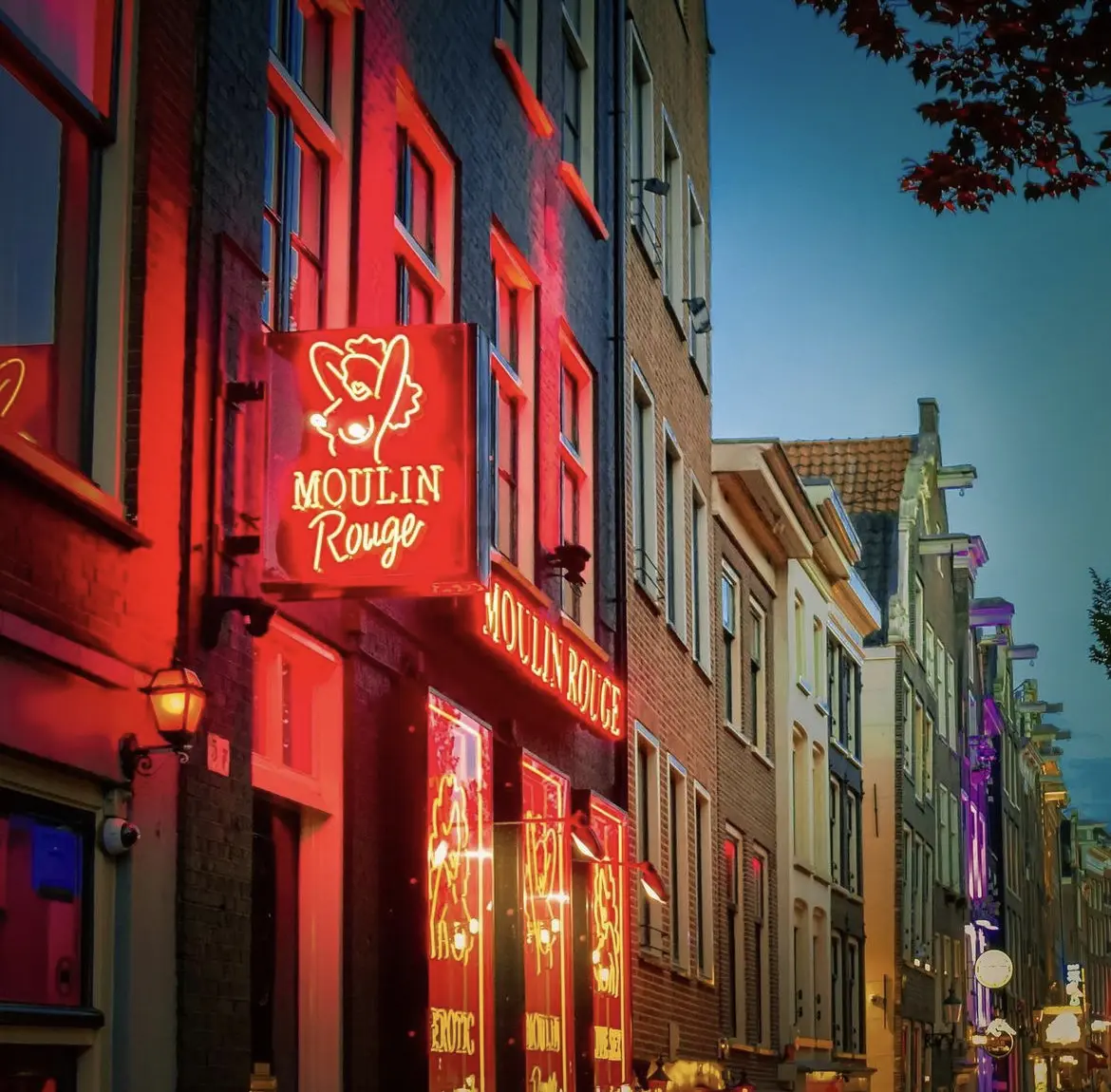
Read Next:
- The Top Boutique Hotels in Amsterdam, Netherlands
- The Best 5-Star Hotels in Amsterdam, Netherlands
- The Best Time To Visit Amsterdam
- A Festive Guide To Christmas In Amsterdam
- The Best Christmas Markets in Amsterdam: 2024 Edition
Navigating the Red Light District
Amsterdam’s Red Light District might seem like a world unto itself, but with a little know-how, you can navigate it like a local. Here’s your essential guide to getting around, staying safe, and making the most of your neon-lit night out.
Getting There and Getting Around
Tucked away in the city’s historical center, the district is surprisingly accessible. Walking from Central Station, you’ll find yourself amidst the glow in about 10 minutes. Bicycles are the heartbeat of Amsterdam, but given the Red Light District’s narrow streets and heavy foot traffic, walking is your best bet for soaking in the sights.
Once there, let curiosity be your compass but keep an eye on your map; it’s easy to get turned around in the maze of alleys. The area is relatively compact, so you can cover a lot of ground in a short time. Just remember, the cobblestone streets are charming but uneven, so wear comfortable shoes.
Staying Safe
Despite its edgy reputation, the Red Light District is one of the safest areas in Amsterdam, thanks to a visible police presence and the city’s generally low crime rate. However, like any busy tourist spot, it attracts pickpockets. Keep your belongings secure and be mindful of your surroundings.
Photography of the workers in the windows is strictly forbidden, a rule enforced by both the law and local… let’s call them ‘enforcers.’ Respect privacy and consent—it’s crucial here.
Embracing the Experience with Respect
The key to enjoying the Red Light District is embracing its unique blend of entertainment and culture with respect. Participating in a guided tour can offer insights into the area’s history and the realities of the sex work industry in the Netherlands. Choose a reputable tour provider who treats the subject with sensitivity and respect.
Red Light Etiquette
- Do: Be discreet if you choose to visit any of the district’s establishments. Respectful behavior is expected and enforced.
- Don’t: Engage in loud, disrespectful, or drunken behavior. The district is a professional workplace for many, and respecting that is crucial.
- Do: Support local businesses. The bars, restaurants, and shops in the area offer some of the city’s best experiences.
- Don’t: Forget that while it’s a unique tourist attraction, it’s also a residential area. Keeping noise to a minimum and treating the neighborhood with courtesy is not just appreciated but expected.
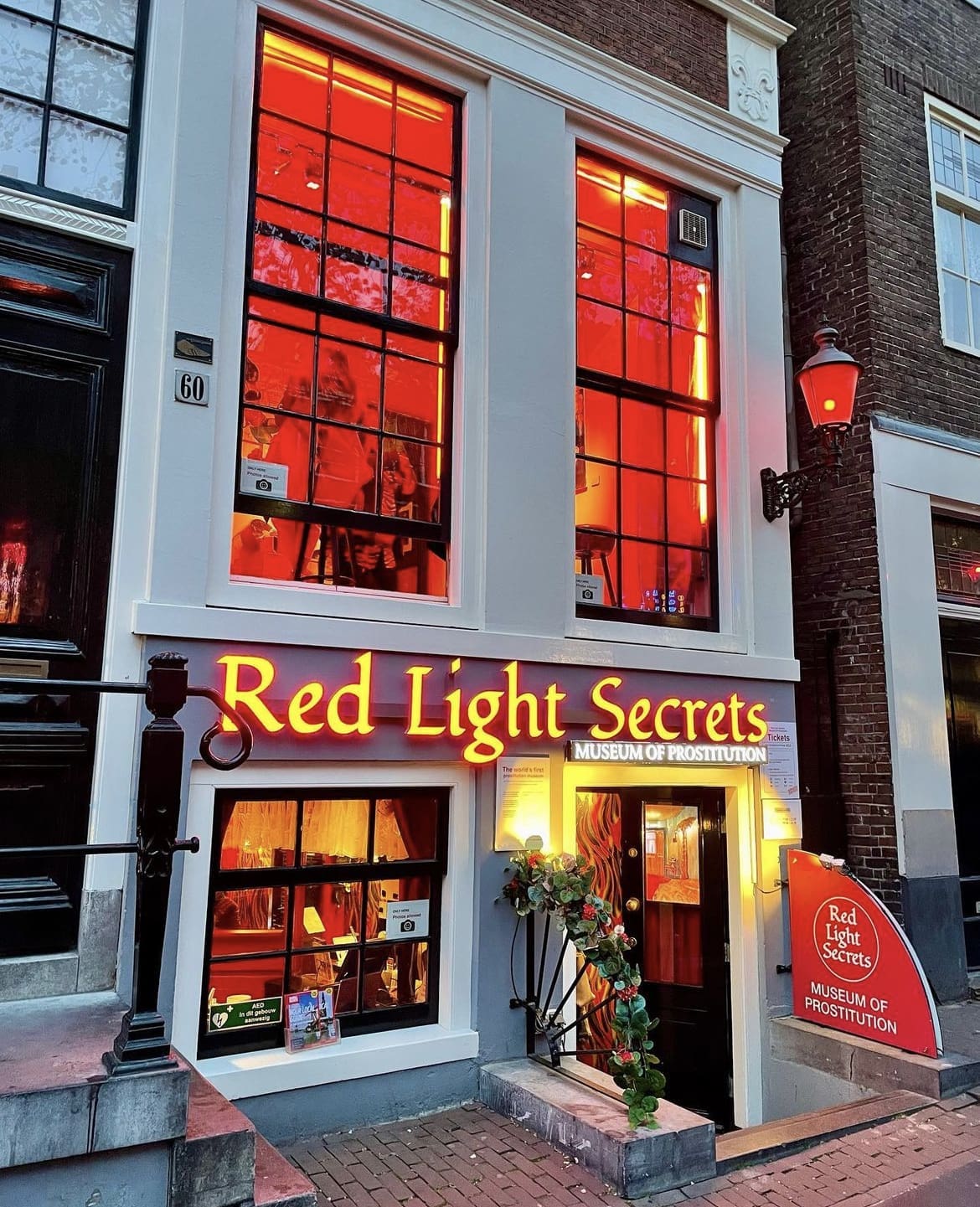
Budgeting for Your Visit
A trip through Amsterdam’s Red Light District can be as modest or extravagant as you choose, but knowing what to expect can help you budget for an unforgettable experience. Here’s a breakdown of potential costs and tips for making the most of your money while exploring the neon-lit nights.
Entry Fees and Attractions
Most of the Red Light District’s charm is free to enjoy—strolling the streets, window-shopping, and soaking in the vibrant atmosphere doesn’t cost a dime. However, some attractions, like the erotic museums or a peek into a peep show, charge entry fees ranging from €5 to €15. If you’re intrigued by the educational side, the Prostitution Information Center offers insightful talks for a small donation.
Guided Tours
For a deep dive into the district’s history and current context, consider joining a guided tour. Prices vary, but expect to spend about €20 to €30 per person for a reputable, respectful tour that lasts around 1.5 to 2 hours. This is a great way to learn the ins and outs from an expert without worrying about missing the district’s hidden gems.
Bars and Clubs
The Red Light District boasts some of Amsterdam’s most unique bars and clubs, ranging from historic brown cafes to modern dance venues. Prices for a drink can vary widely, but on average, a beer will set you back €5 to €8, while cocktails can range from €10 to €15. Club entry fees, when applicable, are usually around €10 to €20. Tip: some of the best experiences are found in the smaller, more intimate venues, so don’t overlook these!
Eating Out
From quick bites to sit-down meals, eating out in the Red Light District caters to all tastes and budgets. Street food options like fries or haring (herring) are delicious, affordable choices for on-the-go snacking, typically under €5. For a more substantial meal, plenty of restaurants in and around the district offer everything from Dutch classics to international cuisine, with prices for a main course ranging from €10 to €25.
Shopping and Souvenirs
Whether you’re looking for unique keepsakes or the quintessential Amsterdam t-shirt, the Red Light District’s shops offer plenty of options. Prices are as varied as the merchandise, but setting aside €20 to €50 should cover most desires, from the cheeky to the charming.
Tips for Saving
- Happy Hours: Many bars have early evening happy hours with discounted drinks. It’s a great way to kick off the night without making a dent in your wallet.
- Combo Tickets: Look for attractions that offer combo tickets or discounts for visiting multiple sites. This can be a great way to see more for less.
- Eat Like a Local: Steer clear of tourist traps by following the locals to eateries just outside the main district area. You’ll likely find better food at lower prices.
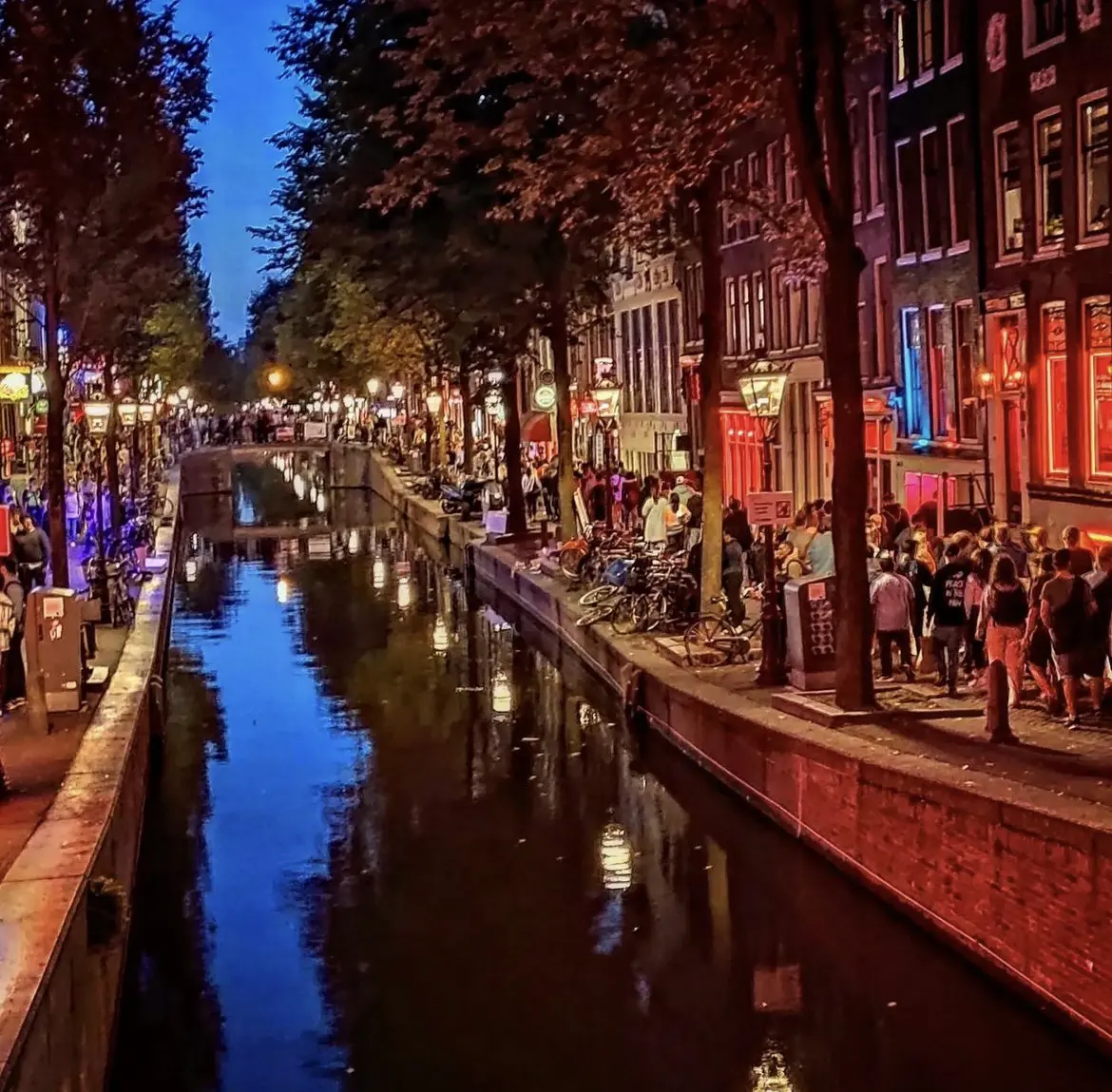
Nightlife and Beyond: Bars, Clubs, and Local Eats
The Red Light District might be famous for its neon windows, but its bars, clubs, and restaurants offer a kaleidoscope of Amsterdam’s nightlife and culinary delights. Here’s where to direct your steps after the sun sets and your appetite for adventure grows.
Bars to Bookmark
The Vibrant Pubs: For a taste of Dutch gezelligheid (a cozy, convivial atmosphere), duck into one of the district’s many pubs. Here, history often meets hops, and you can find yourself sipping a local brew in a building that’s centuries old. Prices are reasonable, and the stories are free.
Specialty Bars: For something a bit different, seek out bars specializing in jenever (Dutch gin) or those with extensive craft beer lists. The staff are usually eager to share their knowledge, making it a learning experience as much as a tasting one.
Cocktail Haunts: There’s a growing cocktail scene in Amsterdam, and the Red Light District is home to several bars leading the charge. Expect to pay a bit more, but for mixology aficionados, it’s worth every cent.
Clubs to Consider
The district’s clubs range from intimate venues with local DJs to larger spots that attract international names. Whether you’re into techno, hip-hop, or something in between, there’s a dance floor waiting. Remember, clubs typically have a cover charge, but once inside, the night is yours to define.
Local Eats to Explore
Street Food: For a quick, delicious bite, Amsterdam’s street food is second to none. From fries smothered in mayo to late-night kebabs, it’s the perfect way to fuel your exploration without breaking the bank.
Sit-Down Meals: The area around the Red Light District brims with dining options. From cozy Dutch eateries serving up stamppot (mashed potatoes with vegetables and sausage) to international restaurants offering flavors from around the world, there’s something to satisfy every palate.
Sweet Spots: Don’t forget dessert. Dutch pancakes, stroopwafels, and a myriad of international sweet treats can be found in and around the district. Perfect for a late-night sugar rush.
Tips for a Tasty Trip
- Explore Side Streets: The best bars and restaurants are often found off the main drag. Don’t be afraid to venture down a side street or two.
- Ask Locals: Amsterdam’s residents are famously friendly. Ask for recommendations, and you might discover your new favorite spot.
- Budget-Friendly Dining: Look for combo deals or fixed-price menus for a more affordable dining experience without sacrificing quality.

Respect and Etiquette: Navigating Amsterdam’s Red Light District with Sensitivity
While Amsterdam’s Red Light District offers a tapestry of sensory experiences, the foundation of your visit should be built on respect and understanding. This neighborhood, vibrant with nightlife and rich in history, is also a workplace for many and a residential area. Here’s how to tread thoughtfully through its streets.
Respect the Workers
The neon windows are more than an iconic image of Amsterdam; they represent the livelihoods of the sex workers behind the glass. Photography or filming without consent is not only disrespectful but strictly prohibited. Show the same courtesy and respect you would in any other professional setting. This means no pointing, no mocking, and no invasive questions. Remember, a respectful distance and demeanor are signs of sophistication and empathy.
Mind Your Manners
As you explore, keep in mind that the Red Light District, despite its fame and allure, is part of a bustling city. This means:
- Keeping noise levels down, especially late at night. The district is home to many who appreciate peace and quiet once the sun sets.
- Staying sober enough to respect your surroundings. While Amsterdam is known for its liberal attitudes towards partying, unruly or intoxicated behavior can ruin the experience for everyone.
- Following the local laws and guidelines, especially those related to drug use and public conduct, ensures a safe and enjoyable visit for all.
Support Local Businesses
Many small businesses thrive in the glow of the district’s neon lights. From quaint cafes and unique boutiques to the bars and eateries dotting the area, choosing to spend your money here supports the local economy and contributes to the vibrant community spirit. Plus, you’re likely to uncover some of Amsterdam’s best-kept secrets in the process.
Engage with the Community
If the opportunity arises to have a genuine conversation with locals—whether they’re shopkeepers, bartenders, or fellow visitors—take it. These interactions can provide invaluable insights into the real Amsterdam, far beyond what any guidebook can offer. Just remember, curiosity does not entitle one to pry into personal lives; respect people’s privacy and boundaries.
The Red Light District, with all its complexities and contradictions, is a testament to Amsterdam’s history, its present, and its tolerance. Navigating it with respect not only enriches your experience but honors the lives and stories of those who call it home. By walking its streets with sensitivity and awareness, you contribute to the ongoing narrative of this unique neighborhood, ensuring it remains a place of mutual respect and understanding.
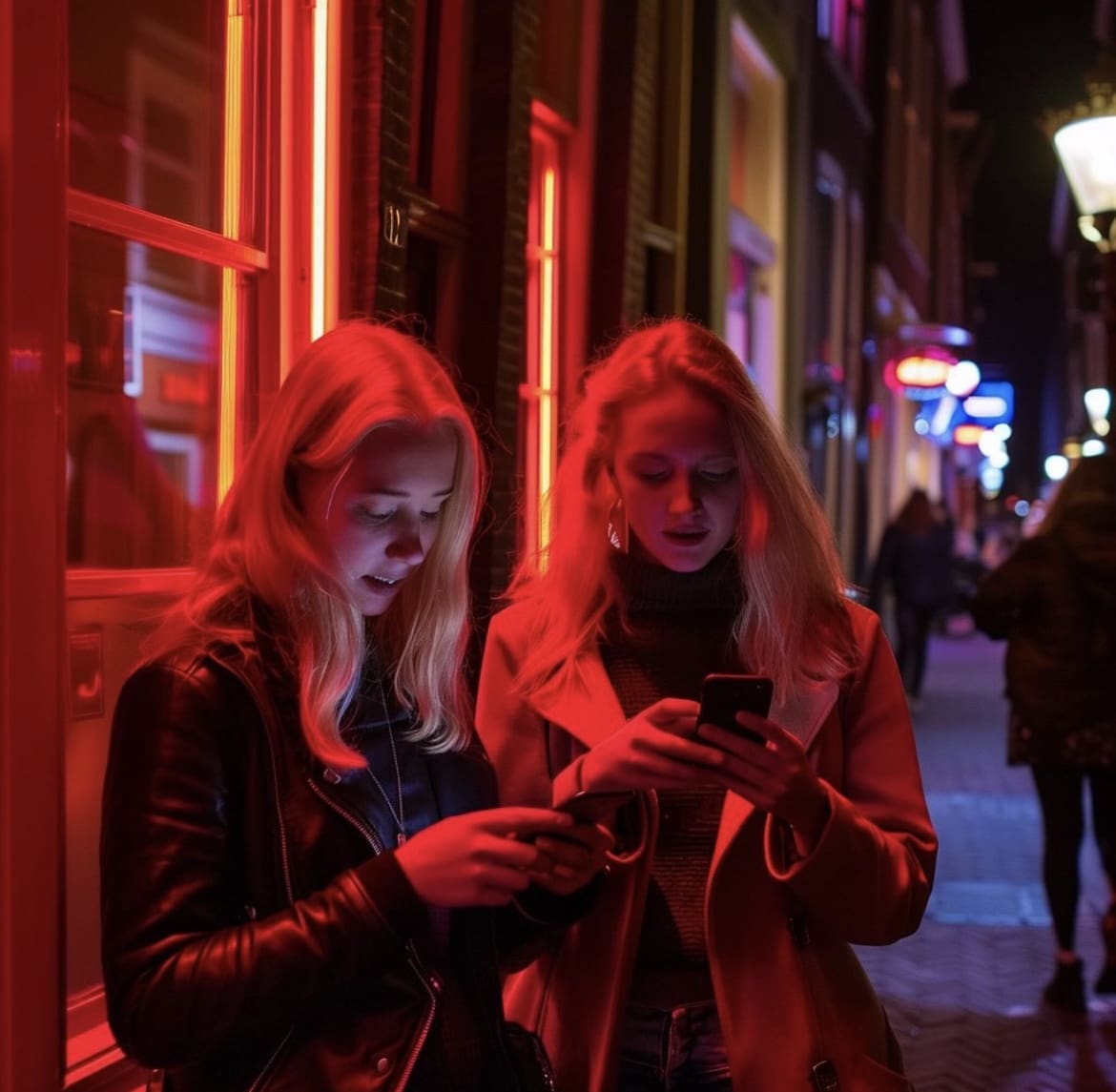
Beyond the Bright Lights: Exploring Alternative Amsterdam
Amsterdam is a city of layers, each offering its own unique set of stories, flavors, and sights. While the Red Light District shines bright in the city’s nightlife, stepping just a bit outside reveals a tapestry of cultural and sensory experiences. Here’s how to enrich your Amsterdam adventure beyond the neon glow.
The Cultural Fabric
- Museums and Galleries: From the world-renowned Rijksmuseum to the contemporary streaks of the Stedelijk, Amsterdam’s museums are treasure chests of art and history. Don’t miss the Van Gogh Museum, an ode to the troubled genius whose work has captivated millions.
- The Canal Belt: A UNESCO World Heritage site, the Canal Belt is Amsterdam at its postcard-perfect best. Hire a bike or take a leisurely stroll to appreciate the architecture and the ever-changing reflections on the water.
- The Jordaan: Once a working-class neighborhood, the Jordaan has transformed into a chic district filled with boutiques, galleries, and eateries. Its narrow streets and quaint canals make it an ideal place for an afternoon wander.
The Taste of Amsterdam
- Local Markets: Albert Cuypmarkt and Noordermarkt offer a glimpse into Amsterdam’s diverse culinary scene. Sample Dutch cheeses, Indonesian snacks, or the freshest herring.
- Brewery Tours: Amsterdam’s craft beer scene is booming. Visit breweries like Brouwerij ‘t IJ or De Prael for a taste of local brews and a peek behind the scenes.
- Farm-to-Table Dining: Sustainability is more than a buzzword in Amsterdam; it’s a way of life. Explore restaurants that focus on locally sourced, seasonal ingredients for a meal that’s delicious and eco-conscious.
Embracing the Green
- Parks and Gardens: Vondelpark is the city’s green lung, a vast expanse of lawns, ponds, and walking paths. For a more secluded experience, seek out the Hortus Botanicus, one of the oldest botanical gardens in the world.
- Day Trips: The Netherlands is famously flat, making it perfect for cycling adventures. Rent a bike and head to the countryside. The windmills of Zaanse Schans and the historic city of Haarlem are just a short ride away.
Conclusion: A Journey Through Amsterdam’s Heart
Exploring Amsterdam’s Red Light District offers a unique window into the city’s culture of openness, tolerance, and celebration of individual freedoms. But remember, this vibrant quarter is just one facet of Amsterdam’s diverse charm. Beyond the neon lights, the city unfolds in layers of history, art, culinary innovation, and green spaces, inviting visitors to dive deeper into its rich tapestry.
As you wander through Amsterdam, from the lively alleys of the Red Light District to the serene pathways of its parks, carry with you a sense of curiosity and respect. Engage with the city’s history, its people, and its culture. Amsterdam offers a journey not just through its streets but through the experiences that shape our understanding of beauty, tolerance, and human connection.
